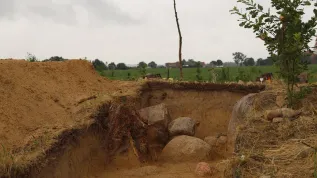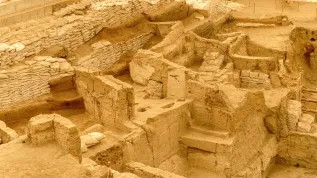
Salt mine in Bochnia and Saltworks Castle in Wieliczka are another Polish sites inscribed on the UNESCO list. The decision has been taken by the World Heritage Committee, whose meeting continues in the capital of Cambodia.
The Ministry of Culture and National Heritage announced that the tunnels in Bochnia and Saltworks Castle in Wieliczka completed the UNESCO World Heritage List entry for the Wieliczka Salt Mine, which was inscribed on the list in 1978. All three sites related to the history of salt mining in Małopolska now appear under the common name "Royal Salt Mine in Wieliczka and Bochnia".
The decision to add more Polish sites to the list has been taken by the UNESCO World Heritage Committee at a meeting in Phnom Penh, Cambodia. Extending the entry was solicited by the management of the Bochnia salt mine, with cooperation of the management of the salt mine in Wieliczka and the Salt Mine Museum in Wieliczka. The proposal preparation was coordinated and supervised by the National Heritage Board of Poland.
The mine in Bochnia was established in the mid-thirteenth century, the historical zone are three shafts and 9 levels below the surface, and the valuable legacy of spiritual culture of Bochnia miners are underground chapels and places of worship.
Other sites inscribed on the UNESCO World Heritage List are wooden churches in the Polish and Ukrainian Carpathian region. This was the first entry of Polish sites on the UNESCO list in seven years - most recently, in 2006, Centennial Hall in Wroclaw was inscribed.
More sites added on Friday include Sicilian Etna, the Namib Desert in Namibia on the Atlantic coast, the El Pinacate Biosphere Reserve and the Altar desert in Mexico. On Saturday, the committee decided to add Japanese Mount Fuji to the UNESCO list - the highest peak of the country and the sacred mountain of the followers of Shintoism.
Meeting of the World Heritage Committee began on Thursday and will continue until June 27. During that time, the committee will consider proposals for 31 natural and cultural sites, aspiring to the UNESCO World Heritage list.
14 sites in the Polish territory are now UNESCO World Heritage Sites. The register has entries for 969 sites in 157 countries.
PAP - Science and Scholarship in Poland
stav/ awl/ ro/ abe/ mrt/
tr. RL













